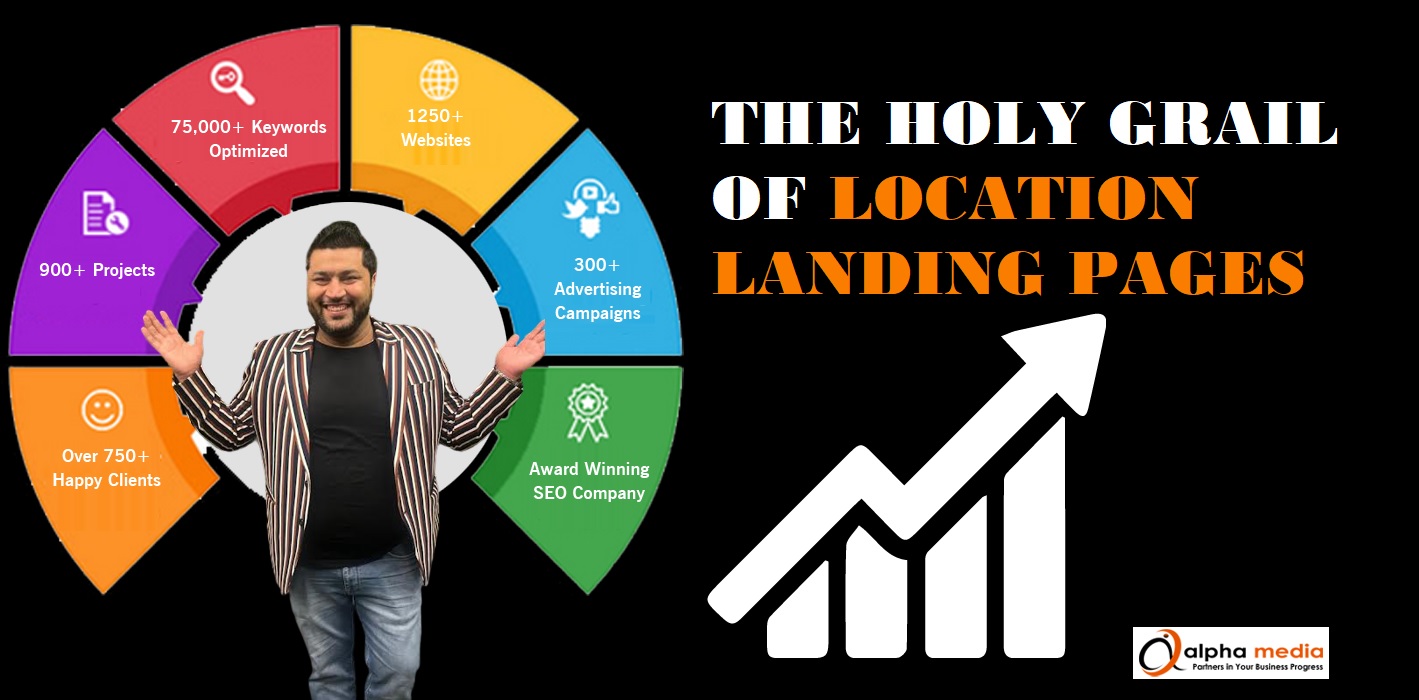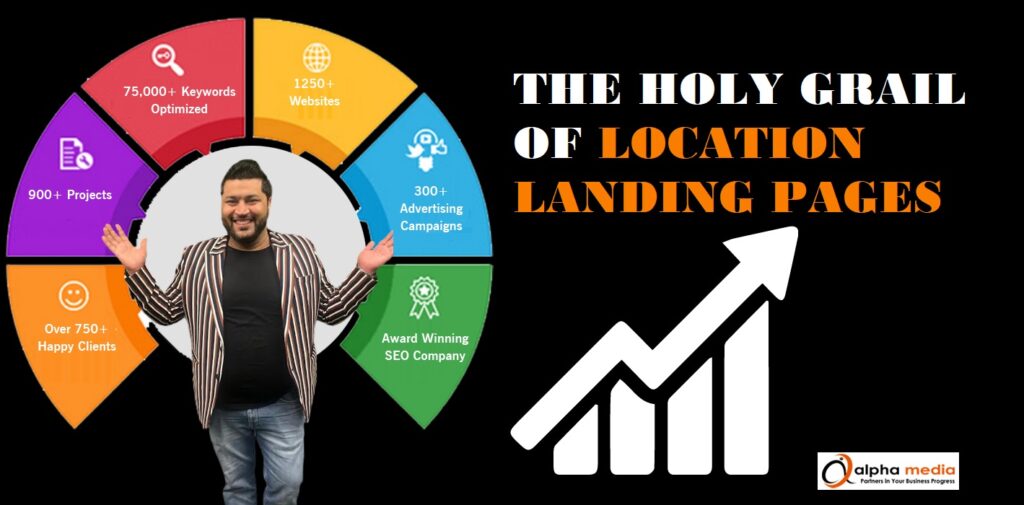
A location landing page is a powerful tool for any business with multiple locations. When designed and executed well, a location landing page can help boost your SEO, increase conversion rates, and improve customer satisfaction. In this article, we’ll walk you through the key steps to designing and launching a successful location landing page.
What are Location Landing Pages?
Location landing pages are those that are designed to appeal to a specific geographic area. They typically feature content that is relevant to the location, including information on local attractions, businesses, and events. A well-designed location landing page can be a powerful tool for driving conversions, as it allows you to target a specific audience with relevant content.
When designing a location landing page, there are a few key elements to keep in mind. First, the page should be designed to load quickly and be mobile-friendly. Second, the content should be relevant and engaging, with a focus on attracting the attention of the target audience. Finally, the page should include calls to action that encourage visitors to take the desired action, such as making a purchase or signing up for a newsletter.
By following these tips, you can create location landing pages that are designed for conversion success.
How To Write Perfect Location Landing Pages
You have one chance to make a first impression. And when it comes to location-based businesses, that first impression happens on your landing page.
It’s essential that your landing page accurately reflects your brand and entices visitors to take the next step—whether that’s making a reservation, signing up for a tour, or even just learning more about your business.
The good news is, with a little planning and forethought, you can design a high-converting location landing page that will help you achieve your business goals. Here’s a step-by-step guide to get you started.

- Title Tag
The Title Tag is made to contain the product’s or service name, and the location of the business offering the product or service. Say for instance we intend to create a Location Landing Page for “Tandoor Manufacturer,” the primary way to build this for most SEO professionals would most likely involve creating a Location Landing Page with the product and its location made conspicuous. For example: “Tandoor Manufacturer in Delhi”. There’s no harm done with this practice and it sure will provide appreciable results.
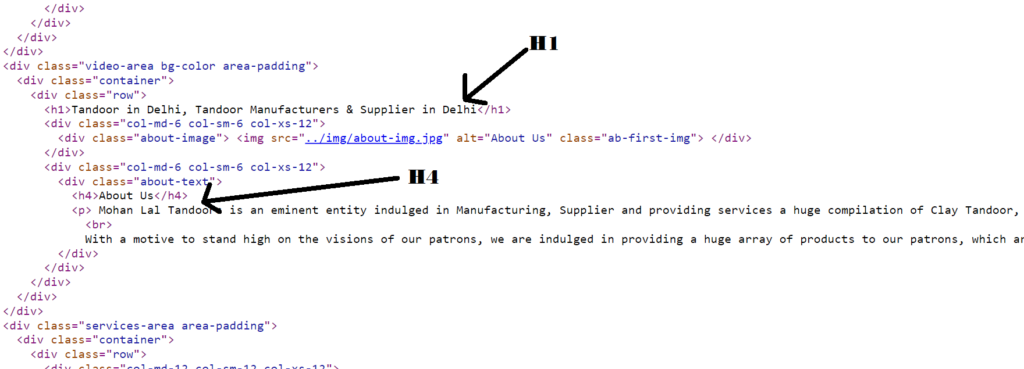
- H1 (Header 1)
The first header is usually made similar to the Title Tag in many SEO practices. In the case of the example cited above, the H1 tag could be “Best Tandoor Manufacturer in Delhi.” - H2 (Header 2)
The second header allows for the use of more keywords. But quite often, most SEOs do not utilize their H2s. A fitting example for the mock service above would be: “Looking for tandoor manufacturing company in Delhi”?
- Content (particular to the Location)
The grave error most SEOs make in this regard is that they generalize their content. For a Location-targeted Landing Page, the content on such a page must reflect and provide adequate information about the location.
In our example, the content will become very applicable if it talks about other important features of the location ranging from the weather to the economy, population, important dates, beautiful spots for sightseeing, etc.
Further streamlining of the content will include facts about the tandoor/oven industry in that location (e.g. Delhi).
Providing streamlined/boilerplate content that changes on each location automatically can help scale when creating a massive amount of Location Landing Pages. Often this method is called the Smart Content Method and involves the use of Smart Content SEO Tools.
Let’s Talk About Deeper Steps While Creating Perfect Location Landing Pages
The basics of building a Location Landing Page have been carefully highlighted above. But those who want more than just the basics, you can do much more with Location Landing Pages. We are about to delve deep as promised — here are the points you need to know:
- Images (Relevant to the Location)
SEO professionals are often guilty of channeling all their SEO efforts towards other aspects of their SEO campaign, but they often forget the importance of images.
Failing to optimize images is usually heavily reflected in a Location Landing Page that lacks a unique image. Local Search Marketing endeavors require unique images on your Location Landing Page. A unique image in this sense should have no prior presence on the internet. It must be related to the topic and must resonate with the target audience To suit our example above, we will need to make sure that the image selected will have elements related to, for example “Tandoor/Oven” and the location “Delhi”.
- Display a physical location to represent the service
The location of the business can be essential to running a successful Location SEO campaign. A Local Search Optimization will be more useful for Google if there a physical address on your Location Targeted Landing Page. Google has many capabilities that will allow it interpret your address from the content on your Landing Page.
- Google Map
With your address on your Landing Page already, many people would tell you that it is important to embed a Google Map on your Landing Page. However, that’s exactly what you shouldn’t do in 2022 in our experience, anymore.

Benefits of Location Landing Pages
If you’re running a business with multiple locations, then you know how important it is to have a strong online presence. One way to achieve this is by creating location landing pages for each of your locations. Location landing pages are designed to help improve your search engine ranking for specific geographic areas, and they can also be used to target local customers with special offers and deals.
If you’re not sure how to get started with designing location landing pages, don’t worry – we’ve got you covered. In this article, we’ll walk you through the process step-by-step, so you can create landing pages that are both effective and attractive. By the end, you’ll have all the tools you need to start driving more traffic and conversions from your local customers. Let’s get started!
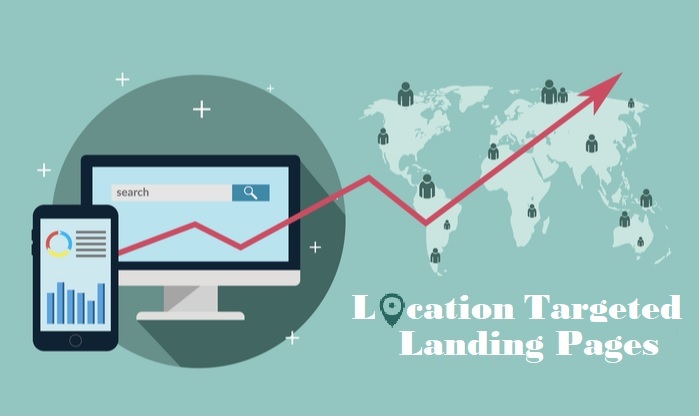
Location landing pages bring many benefits to businesses in all industries as well as to consumers. Searching for area-specific keywords helps consumers decipher what local companies provide the products or services for which they’re searching. People want convenience, and one of the most convenient things is finding a company that fulfills a demand and that’s close to home. Search engines may increase rankings of websites with properly optimized location landing pages because these pages, when optimized for local users, improve user experience with search engines and tailor the experience to users’ needs. Search engines strive to make their sites user-friendly and beneficial to the consumer more than to businesses.
Location landing pages do pose some advantages to customers, but their main benefit is better, more effective search engine optimization. Search engine optimization is a process that increases visibility and, ultimately, impressions and conversions for a business’s website. Creating location landing pages is mainly for SEO purposes, as it helps the business target location-based customers and service areas. Location-based keywords offer much more obtainable rankings than broader terms.
Targeting smaller service areas and locations increases the chances of finding a customer who will become a conversion. Targeting long-tailed keywords means you can rank more quickly for search terms and achieve more visibility with people in your service area. Appealing to a more succinct target audience is one of the most beneficial changes you can make to your website for SEO.
Consult a professional, trustworthy SEO company to find and research the best key terms to optimize your website. It can also be beneficial to have your SEO company create your location landing pages so that they’re explicitly built for optimization and uniqueness. Copy-and-pasted content on every single location landing page may appear as spam to search engines and hurt optimization rather than help it.
Where To Publish Location Landing Pages On Your Website
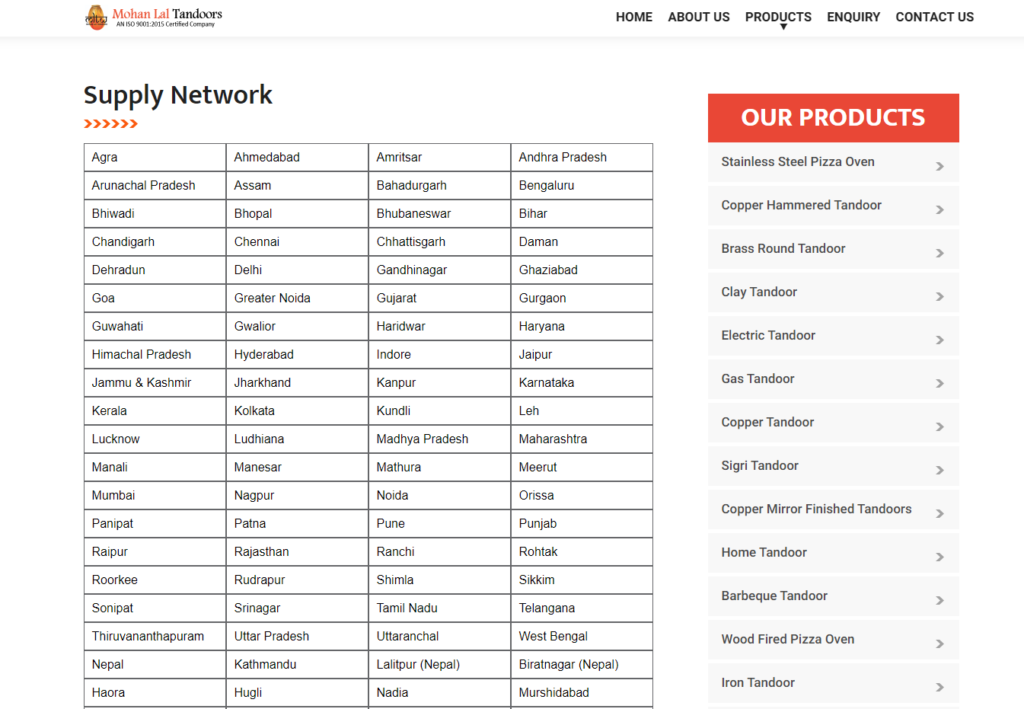
If you’re running a business with multiple locations, it’s important to have location landing pages on your website. Location landing pages help customers find the information they need about a specific location, and can be a powerful tool for driving conversions.
There are a few things to keep in mind when designing location landing pages:
1. Make sure the page is clearly labeled with the location name and address.
2. Include key information about the location, such as hours of operation, contact information, and directions.
3. Use images and videos to give visitors a sense of what the location looks like.
4. Use persuasive copy to highlight the benefits of visiting the specific location.
5. Include calls-to-action (CTAs) that encourage visitors to take action, such as making a reservation or scheduling an appointment.
By following these tips, you can create location landing pages that are designed for conversion success.
Competing with Google Local Results/ Google My Business Results
If you’re trying to get your business to show up in Google Local results (or Google My Business results), you’re going to need to design a location landing page that converts. Here’s a step-by-step guide to doing just that.
1. Know your audience. Who are you trying to reach with your location landing page? What are their needs and wants? What kind of language do they use? Answering these questions will help you better design your page to appeal to your target audience.
2. Make it easy to find your location. Your page should have prominently displayed maps, directions, and contact information so potential customers can easily find and get in touch with your business.
3. Use engaging visuals. People are more likely to remember information that is presented visually, so make sure your page includes images and videos that showcase your products or services.
4. Highlight special offers and deals. If you’re running any specials or discounts, be sure to mention them on your location landing page! This is a great way to entice potential customers to visit your business.
5. Use testimonials and customer reviews. Social proof is powerful stuff – use testimonials from
Conclusion
To maximize your search results and lead generation, make sure that you design separate landing pages for each city that you’re targeting and attach a Google+ local page for your physical address.
Above all, create unique, location-specific copy for your landing pages.
Building a local landing page requires an investment. It could be the investment of your time, money or both. However, it’s become a lot easier these days, because of the plethora of landing page creators and landing page templates.
Landing pages don’t have to stand alone. They can be attached to your blog posts or corporate website. When marketers think of a landing page, they’re thinking about a page that helps them capture an audience and begin the relationship process. A lot of marketers are more concerned about the aesthetics of the page, a clean design, and a good visual user experience, rather than its functionality.
But, Google views landing pages differently. If you study your Google analytics carefully, you’ll discover that Google defines landing pages as any page on which search users entered your site. For example, if people discover and come to your site through the about page, Google will treat it as a landing page. But you (as the marketer) may not have viewed your about page that way.
Here’s how to strike a balance: Treat every page as a landing page. This is a game-changer, it means that you can start considering CTA buttons on your web pages, that you study landing page templates to see how you can take those ideas and apply them to your web site, and that you start to think outside the box when it comes to conversion rates and lead gen across the board, even right down to your social media sites.
There are good reasons why people should visit your web site, starting from the about page, service page or even the contact page. It’s your responsibility to optimize these pages for mobile, make them insanely fast, and add relevant calls to action.

Your Growth, Our Mission.
Founded with a vision to empower businesses in the digital age, Alpha Media is a full-service digital marketing agency committed to delivering measurable growth through innovative strategies. We specialize in Local SEO, Google Ads, Meta Ads, Website Design, and Online Branding tailored for B2B service providers, manufacturers, and local businesses.
🌐 About Alpha Media
Alpha Media is a results-driven digital marketing agency based in Delhi, India, led by visionary founder Anshul Sethi. With a passion for innovation and a mission to transform businesses through performance marketing, we have delivered over 800+ successful projects across 20+ countries, making us one of the fastest-growing agencies in the industry.
🚀 Our Mission
To empower businesses with powerful digital solutions that drive measurable results, build trust, and create lasting brand value.
💡 What We Do
At Alpha Media, we specialize in:
Search Engine Optimization (SEO) – Boost your Google rankings with location-wise SEO strategies tailored for local, national, and global markets.
Google Ads (PPC) – ROI-focused ad campaigns designed to drive high-intent leads.
Meta Ads (Facebook & Instagram) – Creative, conversion-optimized social campaigns.
Website Design & Development – Mobile-responsive, SEO-ready websites with smart UI/UX.
Lead Generation Funnels – Automated systems to capture, nurture, and convert leads.
Press Releases & Awards Marketing – Position your business as a market leader.
WhatsApp Automation – Personalized automation for fast and effective client interaction.
🌍 Why Choose Us?
✔ Experienced Team: 90+ digital experts, designers, strategists, and developers.
✔ Trusted by Global Brands: Clients from India, UAE, USA, Canada, and Europe.
✔ Certified by Google, Bing & Meta: We follow ethical and effective practices.
✔ Transparent Reporting: Weekly performance updates and growth tracking.
✔ End-to-End Marketing: Everything from web design to leads under one roof.
🎯 Leadership You Can Trust
Anshul Sethi, Founder & Director of Alpha Media, is a digital strategist with years of experience in performance marketing. His leadership has shaped Alpha Media into a powerhouse of innovation, creativity, and conversion. Under his guidance, the agency handles 2% of India’s digital ad spend across multiple niches.
📞 Let’s Grow Together!
Whether you are a startup or an established business, Alpha Media has the strategy, tools, and team to scale your success.
📧 Email: info@alphamedia.in
📍 Visit us at: www.alphamedia.in

